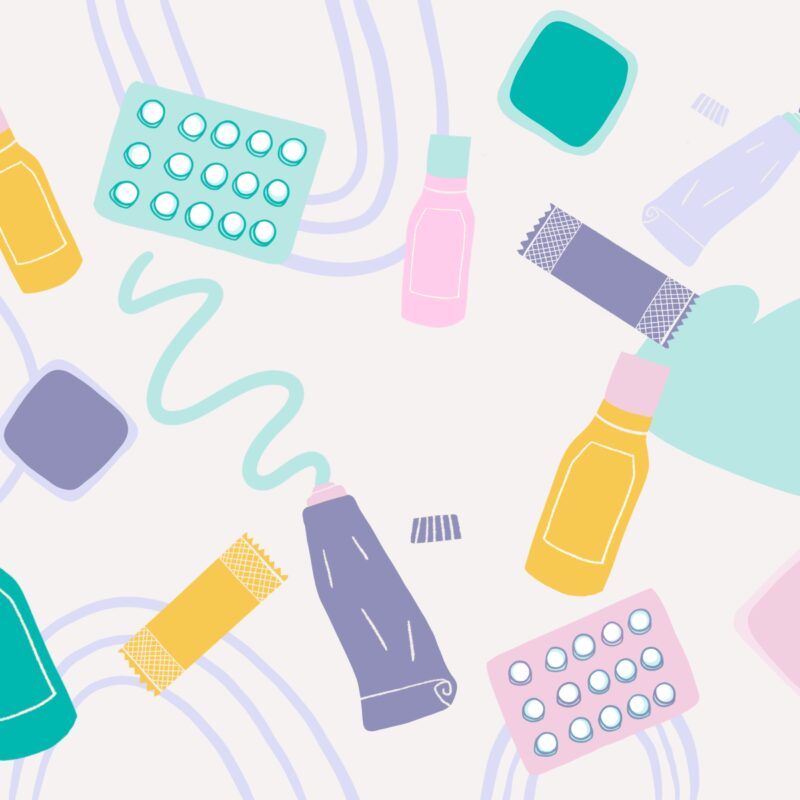7 common sun protection mistakes – and how to avoid them
Advice on sun protection during the perimenopause and menopause
Skin changes are very common during the perimenopause and menopause: falling estrogen levels mean your skin can become thinner and less supple, leading to drier skin and fine lines.
And while tackling these changes may lead to you switching up your skincare routine, one thing that should remain constant is using sun protection.
The importance of sunscreen in protecting your skin from the sun’s harmful rays is well established, yet you may not always be using your sun protection properly to get the maximum benefit.
So with the seasons moving from spring to summer, consultant dermatologist and balance+ guru Dr Sajjad Rajpar takes you through the seven common sun protection mistakes you may be making – and how they can impact perimenopausal and menopausal skin.
RELATED: Skin changes during menopause factsheet
1. Not using any sun protection? You’re exposing your face to ‘double ageing’ of the sun and menopause
A healthy tan is a myth: any change to your skin colour is a sign of damage caused by the sun’s powerful ultraviolet B (UVB) and ultraviolet A (UVA) rays. Light hitting the skin can cause DNA changes at a cellular level, causing ageing and increasing your risk of skin cancer.
And during the perimenopause and menopause, declining levels of estrogen means lower levels of collagen and elastin in your skin. These proteins provide strength to the skin and without them, skin forms fine lines and wrinkles.
‘UV light from the sun also causes degeneration of the collagen in your skin, so if you’re not protecting your skin from the sun and you are also menopausal, you’re having two sources of attack on your collagen, which is going to lead to more rapid ageing,’ says Dr Rajpar.
2. You’re applying your facial sunscreen too early before leaving the house
These days, many foundations contain a level of sun protection factor (SPF). And while the general advice is to apply sun protection at least 30 minutes before going into the sun, you may be applying facial sunscreen a few hours before leaving the house as part of your morning skincare and make up routine.
Applying sunscreen too early is a common and potentially costly mistake for your skin, says Dr Rajpar.
‘Once your sun protection is on your skin, it starts breaking down and you have about two hours, or maybe three, when it is working,’ he says.
‘If you put on it in the morning, by lunchtime its potency it will have faded and you skin will be unprotected when you go out in the afternoon. If you won’t be outside in the morning, delay putting sunscreen on till later on. Don’t think you can just rely on the sun protection in your foundation all day.’
3. You’re not using enough sunscreen – or forgetting to reapply
Dr Rajpar says people rarely use enough sunscreen, and forget to reapply, to get the full sun protection factor on the label.
The NHS recommends adults should apply around six to eight teaspoons of sunscreen if covering your entire body. If sunscreen is applied too thinly, the amount of protection it gives is reduced.
You should reapply at least every two hours, particularly after swimming, or if you have been sweating. And don’t fall into the trap of forgetting to reapply sunscreen on your face later in the day, even if you are wearing make up – if using lotion, aim for about half a teaspoon to cover your face and neck.
Plus there are other options beyond sun lotion.
‘There are some really good sunscreen sprays and powder sunscreens now that can be sprayed or brushed on over make-up, are invisible and not sticky,’ he says.
4. You mistakenly think your skin doesn’t need as high protection as you get older
While babies and young children are more vulnerable to sunburn due to their thin, delicate skin, the need for sun protection is paramount whatever your age.
‘Most sun damage happens before the menopause, often we are young adults,’ says Dr Rajpar.
‘But your need for protection from the sun does not decline: you still need to cover up during the hottest part of the day and wear high factor protection.
‘Remember, there’s no such thing as a safe tan.’
5. Your go-to sunscreen doesn’t suit your menopausal skin anymore
Declining hormone levels, particularly estrogen, can result in skin becoming drier and more sensitive during the perimenopause and menopause.
While your need for a high SPF remains the same, your menopausal skin may appreciate a change in product.
‘A richer and more moisturising sun protection product may benefit your skin more now as it will also give it your drier skin a welcome boost of hydration,’ says Dr Rajpar.
‘For skin that is becoming more sensitive there are a good and reasonably priced products for sensitive skin in high-street pharmacies, that tend to be fragrance-free and gentler on skin.’
6. You’re relying on sunscreen alone
‘The first step is always to minimise exposure,’ Dr Rajpar says.
‘So seek shade and avoid being outside in the hottest three or four hours of the day. Cover the skin with lightweight fabrics, seek out long sleeves, and wear a sun hat to protect your face.
‘Your skin will repay you by ageing less rapidly and reducing your risk of skin cancer.’
RELATED: Rosacea and menopause: what’s the link?
7. You aren’t checking your skin for changes
While you may be doing all the right things to protect your skin now, skin changes from sun damage tend to have a long time lag and develop very slowly.
Skin cancer risk increases with age: for women, the highest number of cases occur in those aged 70 to 74 years, according to Cancer Research UK.
So you must keep checking your skin and getting any changes checked with your GP. Look out particularly for new or changing moles, especially those with an uneven shape or edges, and with a mix of colours. Those that are large, or swollen, sore, itchy, crusty or bleeding should also be checked, according to NHS.uk.
‘The outcomes with melanoma, the most dangerous form of skin cancer, are much better with early detection, so always get any changes checked,’ says Dr Rajpar.





